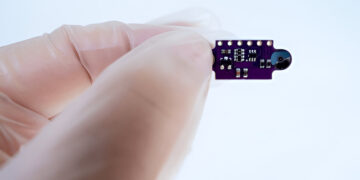Introduction
In the rapidly evolving landscape of electric motors, permanent magnet motors (PMMs) have emerged as a pivotal technology driving efficiency, reliability, and innovation. From household appliances to advanced industrial automation and electric vehicles (EVs), these motors are at the heart of many cutting-edge applications. As industries push toward energy efficiency, compact design, and high-performance solutions, PMMs have positioned themselves as a cornerstone in the future of motion systems. This comprehensive guest post will explore the fundamental concepts, working principles, types, applications, advantages, recent trends, challenges, and future outlook of permanent magnet motors.
What is a Permanent Magnet Motor?
A permanent magnet motor is a type of electric motor that utilizes permanent magnets to create the magnetic field required for motor operation. Unlike conventional electric motors that rely on electromagnetic windings in both the stator and rotor, PMMs leverage permanent magnets (typically composed of materials like neodymium, samarium-cobalt, or ferrite) in the rotor or stator to generate a constant magnetic field. This design leads to improved efficiency, reduced energy losses, and more compact motor dimensions.
Permanent magnet motors are widely employed across various sectors due to their high torque-to-weight ratio, superior dynamic performance, and enhanced energy efficiency. Their inherent simplicity and robustness make them an attractive option in diverse applications, from electric vehicles and robotics to HVAC systems and industrial automation.
Working Principle of Permanent Magnet Motors
The operation of a permanent magnet motor hinges on the interaction between the magnetic field generated by the permanent magnets and the electromagnetic field produced by current-carrying conductors (typically in the stator). According to Lorentz’s force law, when a current flows through a conductor placed in a magnetic field, it experiences a force perpendicular to both the current and the magnetic field. This interaction produces the rotational motion required to drive mechanical loads.
PMMs generally have a stationary stator containing windings that produce an alternating magnetic field when an electric current flows through them. The rotor, embedded with permanent magnets, aligns and interacts with the stator’s magnetic field, resulting in continuous torque generation and motor rotation.
Types of Permanent Magnet Motors
- Permanent Magnet DC Motors (PMDC)
- Utilizes permanent magnets to provide a constant magnetic field.
- Simple construction, suitable for applications like automotive starters, toys, and portable tools.
- Brushless DC Motors (BLDC)
- Eliminates brushes and commutators, using electronic controllers for commutation.
- High efficiency, reliability, and longevity.
- Common in drones, medical devices, and computer cooling fans.
- Permanent Magnet Synchronous Motors (PMSM)
- The rotor rotates synchronously with the stator’s magnetic field.
- Offers high power density and efficiency.
- Widely used in electric vehicles, industrial drives, and air conditioners.
- Interior Permanent Magnet Motors (IPM)
- Embeds magnets within the rotor core.
- Combines reluctance torque and magnetic torque.
- Preferred in automotive traction applications due to their high torque and robust performance.
Key Advantages of Permanent Magnet Motors
- High Efficiency: Reduced losses due to the absence of rotor windings and improved magnetic flux density.
- Compact and Lightweight: High power-to-weight ratio facilitates miniaturization.
- Low Maintenance: Brushless designs eliminate the need for regular maintenance.
- Improved Torque and Speed Characteristics: Superior performance in dynamic applications.
- Enhanced Reliability: Fewer components prone to wear and failure.
- Energy Savings: Particularly valuable in applications requiring continuous operation.
Applications Across Industries
- Automotive
- Electric vehicles, hybrid vehicles, and power steering systems.
- Industrial Automation
- Robotics, CNC machines, conveyors, and pumps.
- Consumer Electronics
- Hard drives, cooling fans, and home appliances.
- Aerospace and Defense
- UAVs, actuators, and advanced control systems.
- Renewable Energy
- Wind turbine generators and solar tracking systems.
- Medical Equipment
- MRI machines, infusion pumps, and surgical robots.
Comparison with Conventional Motors
- Versus Induction Motors
- Higher efficiency and power density.
- Lower operational losses.
- Versus Brushed DC Motors
- No brush wear or maintenance.
- Smoother operation and longer lifespan.
- Versus Switched Reluctance Motors
- Less acoustic noise and torque ripple.
- Higher performance and control precision.
Latest Trends and Innovations
- Advanced Magnet Materials
- Development of rare-earth-free and temperature-stable magnets.
- Integration with Power Electronics
- Compact motor drives with integrated inverters and controllers.
- Wide Bandgap Semiconductors
- Silicon carbide (SiC) and gallium nitride (GaN) devices enabling higher efficiency drives.
- High-Speed and High-Power Designs
- Emerging applications in aerospace propulsion and advanced manufacturing.
- Automotive Electrification
- Innovations in traction motors and powertrain components.
Challenges and Limitations
- Cost of Rare-Earth Materials
- Neodymium and samarium-cobalt magnets are expensive and geopolitically sensitive.
- Demagnetization Risk
- Exposure to high temperatures or external magnetic fields can degrade magnet performance.
- Complex Control Requirements
- Sophisticated electronics needed for brushless and synchronous motor operation.
- Manufacturing Complexity
- Precision needed for magnet placement and rotor balancing.
Future Outlook
The trajectory of permanent magnet motors points toward continued growth and innovation. With increasing emphasis on energy efficiency and electrification, particularly in transportation and industry, demand for PMMs is set to rise. Research into alternative magnet materials, recycling processes, and motor designs that reduce rare-earth dependence will further enhance sustainability and supply chain resilience.
Moreover, advancements in digital control systems, artificial intelligence-based motor management, and IoT connectivity will enable smarter, self-optimizing motor systems. Applications in emerging fields like electric aviation, autonomous robotics, and advanced manufacturing promise to expand the scope and impact of permanent magnet motors even further.
source:https://www.databridgemarketresearch.com/reports/global-permanent-magnet-motor-market
Conclusion
Permanent magnet motors have firmly established themselves as a critical enabler of modern electric motion systems. Their unmatched efficiency, compactness, and performance make them indispensable across numerous industries. While challenges like material costs and control complexity persist, ongoing innovations promise to unlock new potentials and applications. As the world marches toward smarter, greener, and more efficient technologies, permanent magnet motors will undoubtedly remain at the forefront of this transformative journey.
other trending report:
Global Ultramicrotome Market – Industry Trends and Forecast to 2029
https://www.databridgemarketresearch.com/reports/global-ultramicrotome-market
Global Saliva Test Devices Market – Industry Trends and Forecast to 2029
https://www.databridgemarketresearch.com/reports/global-saliva-test-devices-market
Global Yellow Tea Market – Industry Trends and Forecast to 2028
https://www.databridgemarketresearch.com/reports/global-yellow-tea-market
Global Heparin Market – Industry Trends and Forecast to 2030
https://www.databridgemarketresearch.com/reports/global-heparin-market
Global Acidifiers Market – Industry Trends and Forecast to 2028
https://www.databridgemarketresearch.com/reports/global-acidifiers-market
Global Precipitated Silica Market Size, Share, and Trends Analysis Report – Industry Overview and Forecast to 2032
https://www.databridgemarketresearch.com/reports/global-precipitated-silica-market
Global Fish Collagen Peptides Market – Industry Trends and Forecast to 2030
https://www.databridgemarketresearch.com/reports/global-fish-collagen-peptides-market
Global Tankless Water Heater Market – Industry Trends and Forecast to 2028
https://www.databridgemarketresearch.com/reports/global-tankless-water-heater-market
Global Cattle Feed and Feed Additives Market – Industry Trends and Forecast to 2029
https://www.databridgemarketresearch.com/reports/global-cattle-feed-and-feed-additives-market
Global Enterprise Medical Image Viewers Market – Industry Trends and Forecast to 2028
https://www.databridgemarketresearch.com/reports/global-enterprise-medical-image-viewers-market





















